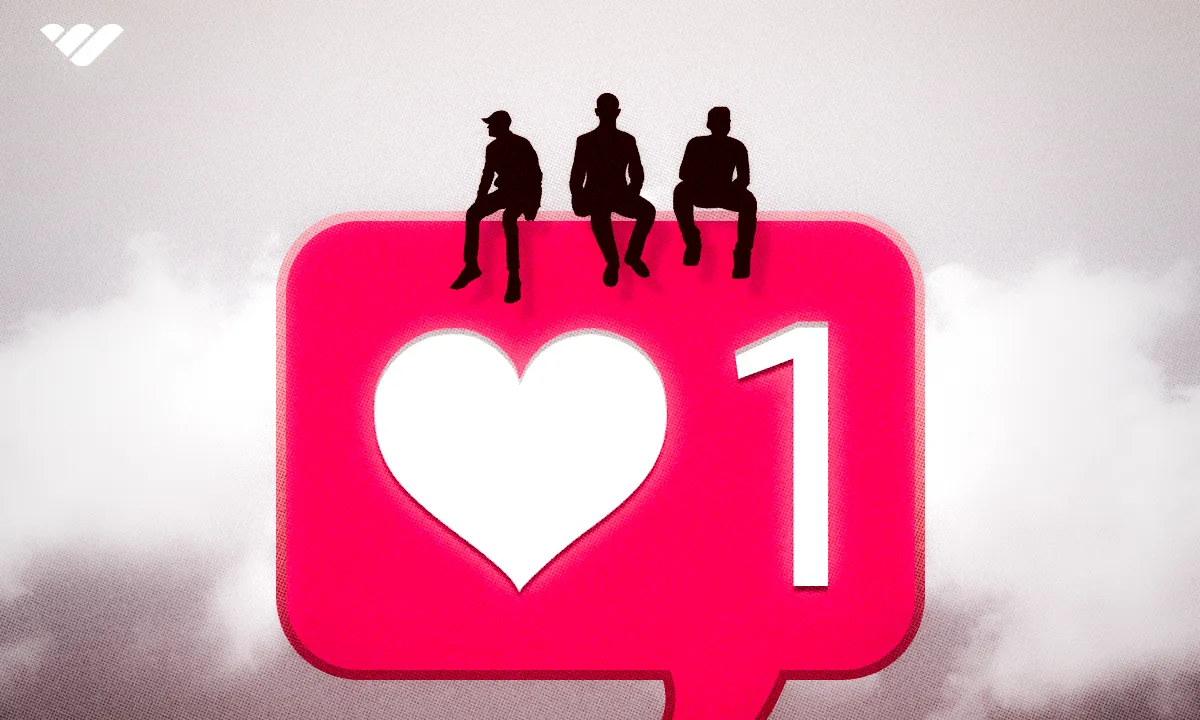Social media is an escapable part of our lives, and so social selling has taken the ecommerce world by storm. Read this guide to understand what social selling is, why it works, and how you can do it.
Key takeaways
- Social selling the inbound way builds authentic relationships through genuine engagement rather than aggressive sales tactics.
- Over 5.07 billion people use social media worldwide, making platforms powerful search engines for product discovery.
- User-generated content is 8.7 times more powerful than influencer content for driving purchasing decisions.
- Content marketing costs 62% less than traditional channels while generating three times as many leads.
- B2B social selling focuses on LinkedIn and thought leadership while B2C emphasizes Instagram and TikTok content.
Businesses, entrepreneurs, and content creators should be wherever their audience is—and nowadays, that’s social media. But unlike the old days of aggressive, pushy selling, customers today expect a seamless experience and authentic content that meets them in the right place at the right time. Enter social selling the inbound way.
Social media has become an indispensable part of our lives. Billions of people use their phones to access platforms such as Instagram, TikTok, Facebook, and LinkedIn to connect, communicate, browse, find inspiration, and even shop. As a result, social media has become a powerhouse for businesses and creators who know how to use it for inbound social selling.
But what is social selling the inbound way, what propelled it, why does it work, and how can you start?
We’ll answer these questions and more. Whether you’re a business owner, marketer, or content creator, social selling the inbound way can help you engage your target audience and sell more. Let’s find out how.
What is social selling?
Social selling involves using social media platforms to connect with potential customers, build relationships, and ultimately generate sales.
The number of social media users keeps growing by the day, making it tempting for businesses and creators to scale their sales efforts by reaching out to more people. But remember that there’s a huge difference between social selling and spamming.
Social selling is about building solid relationships with potential customers and ultimately converting them into buyers. It’s about having meaningful conversations, answering questions, and offering valuable information that eventually leads to sales.
“Randomly scrolling is not a social selling technique. Providing value in the context of a person's question or problem IS,”
said Ali Schwanke, Founder of SimpleStrat
What is social selling the inbound way?
Social selling the inbound way is the process of building relationships and engaging authentically with potential customers on social media.
Social selling was initially conceived as a method for generating sales by connecting with potential customers through social media platforms.
However, businesses and content creators quickly grasped the profound impact that social media could have on consumer decisions through authentic content and meaningful engagement rather than overt sales tactics.
“QVC hosts are brilliant at what they do. They laugh at themselves, crack jokes, and build a connection with the guest and viewers. When it comes to any type of social selling, warm, light-hearted, and human wins,”
-Sarah Moret, founder of Curie.
Here’s where social selling the inbound way came into the picture. This is not to say that one is better than the other—but they serve different purposes.
Inbound social selling focuses on building relationships through genuine engagement on social media, while outbound social selling involves more direct outreach and traditional sales tactics to reach prospects.
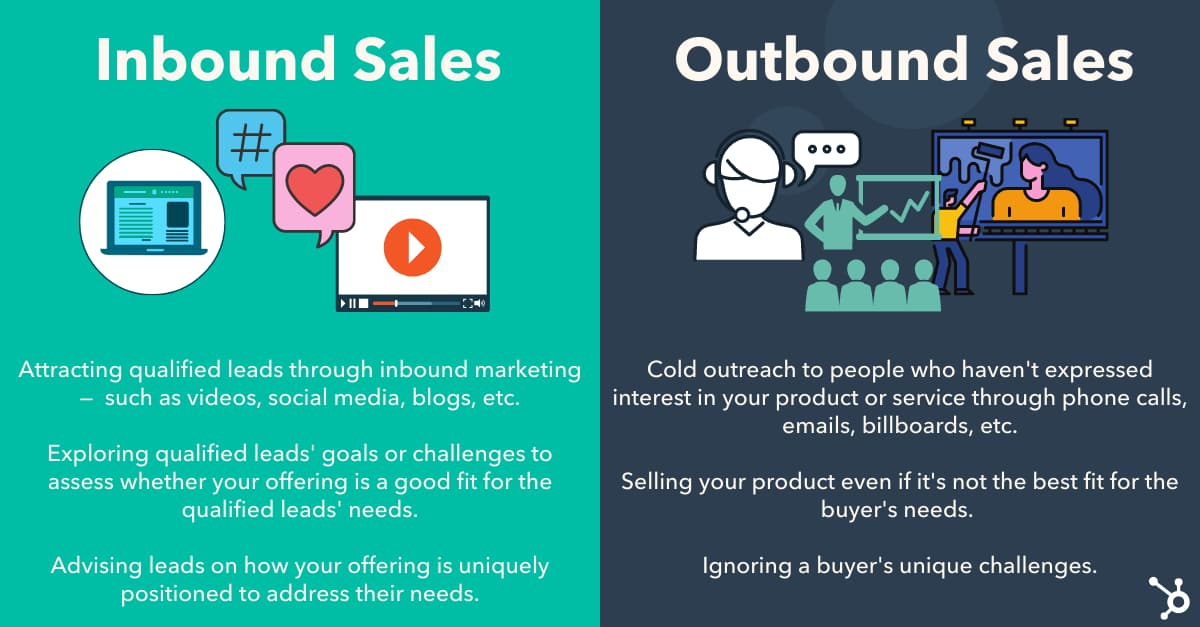
The difference between inbound and outbound social selling lies in the approach, tactics, and timelines:
- Inbound social selling focuses on content creation using the power of content marketing and SEO. Its goal is to build relationships that lead to sales over time.
- Outbound social selling is a proactive approach focusing on direct outreach using cold messaging and social media ads to generate immediate sales. When not done properly, it can come across as aggressive and unwanted.
One brand that’s particularly good at social selling the inbound way is the probiotic soda company Olipop. The brand of functional beverages that promote digestive health is known for its unique taste and vintage can design.
Olipop’s inbound social selling strategy revolves around community engagement, user-generated content, and collaborations that create emotional responses from their customers.
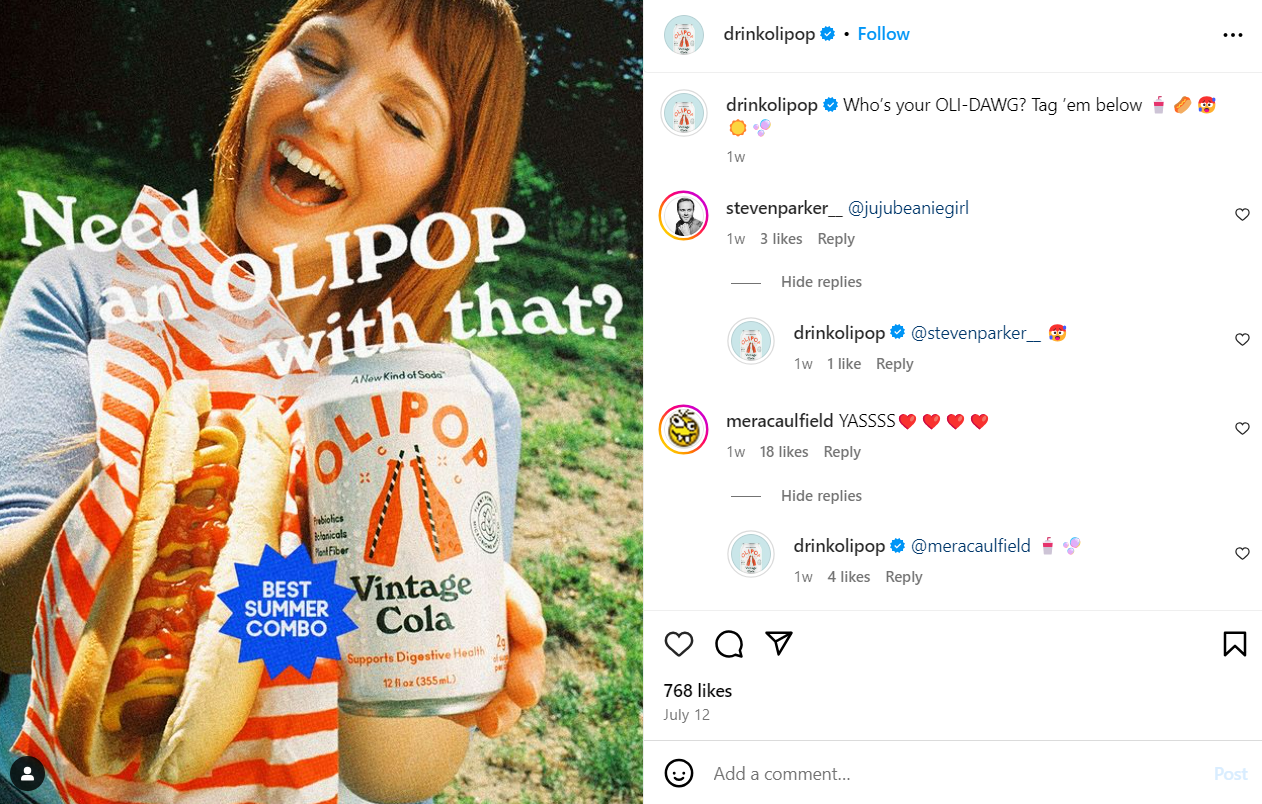
What propelled inbound social selling?
We quickly went from posting pictures of our meals on social media to scrolling our feeds 24/7. The question is, what changed?
Well, almost everything. The global internet penetration rate, the number of smartphone users, and the habits of digital native generations have altered our perceptions of social media.
The new role of social media
There are over 5.07 billion social media users in the world, according to Statista. Can you imagine the amount of content being produced every single day? It’s no wonder social media platforms have evolved into search engines.
Now, whenever people need some inspiration or look for information on what to buy, they turn to their phones and browse social media. As a result, social commerce has exploded and will continue to grow. In fact, data from GlobalNewsWire shows that social commerce sales worldwide are forecasted to reach 8.5 trillion US dollars by 2030.
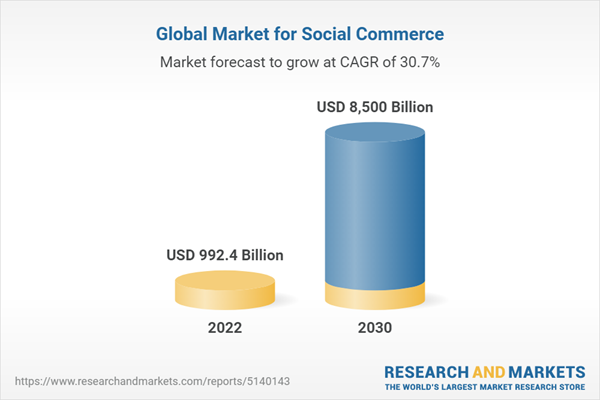
The rise of user-generated content
User-generated content has completely changed social media as brands realized social media users want to engage with authentic content rather than overly edited, picture-perfect content.
This put smaller businesses and content creators on a level playing field with the big players, allowing them to capture audiences’ attention without massive advertising budgets.
As a result, inbound social selling became more nuanced, focusing on community-building and genuine connections rather than purely transactional relationships.
Millennials and Gen-Z shopping habits
Digital native generations are in the driver’s seat, leading the change in how we communicate, socialize, and shop. With $143 billion in buying power, Gen-Z is shaping the future of commerce. Research shows that Instagram and TikTok have the biggest influence on Gen-Z purchasing decisions.
Moving forward, business owners, marketers, and content creators must understand and cater to the buying preferences of Millenials and Gen-Z. The data backs this up: UGC is 8.7x times more powerful than influencer content and 6.6x more influential than branded content.
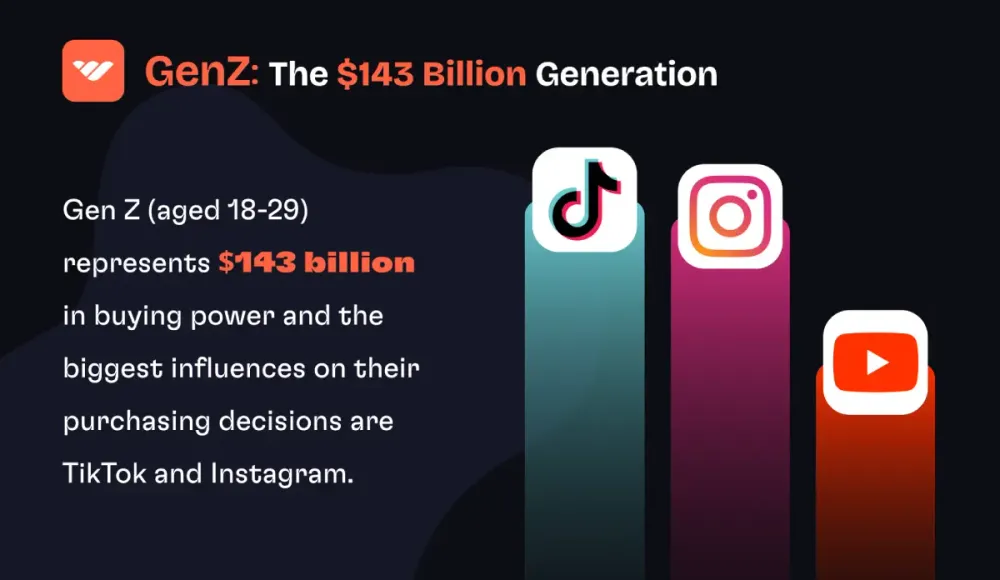
The differences between B2B and B2C inbound social selling
Inbound social selling is different for B2B (Business-to-Business) and B2C (Business-to-Consumer) business models. B2B refers to transactions between businesses, where products or services are sold from one business to another for use in their operations, resale, or other purposes.
As a result, inbound social selling requires more educational resources, industry insights, and thought leadership to help business buyers make informed purchasing decisions.
In contrast, B2C involves transactions between a business and individual consumers, where goods or services are directly sold to end-users for personal use or consumption. For B2C businesses, inbound social selling relies on product demos, user-generated content, customer reviews, promotions, videos, and engaging visual content.
| B2B | B2C | |
|---|---|---|
| Target audience | Companies or professionals who make purchasing decisions on behalf of their company | Individual consumers |
| Content | Industry insights, thought leadership, case studies, whitepapers, ebooks, reports, webinars, and other educational resources | Product demos, customer reviews, UGC, promotions, contests, quizzes, videos, engaging visual content |
| Platform | Instagram, TikTok, Facebook | |
| Sales cycle | Long and complex | Short and simple |
The distinctions between B2B and B2C businesses play a crucial role in shaping the marketing strategies, messaging, and channels companies use to reach and engage their respective audiences effectively.
For example, we can notice how B2B businesses rely more on LinkedIn, while B2C companies invest more time and effort on Instagram and TikTok.
B2B example Klaviyo is an email marketing and SMS platform that uses industry reports, thought leadership, and educational content to share valuable insights with its audience that can help them with the decision-making process.

On the other hand, Gymshark, as a B2C brand, uses content and captions that create a sense of community and belonging for like-minded people. And even when they announce upcoming seasonal sales, they appeal to the emotional side of social media users.
Why does social selling the inbound way work?
Everyone loves to unwind after a long work day by scrolling social media, right? But what makes social media so effective when it comes to social selling? Or, to put it bluntly, why does social selling the inbound way work?
Let’s look at the benefits of inbound social selling:
- Increases your reach - Everyone is on social media nowadays. As a result, you can use inbound social selling to reach a wider audience. Some of the leading businesses, such as Nike, Drunk Elephant, and AirBnB, have millions of social media followers, which gives them much more visibility that goes beyond traditional marketing. And this is the case with content creators as well. Peter McKinnon, Ali Abdaal, and Camila Coelho are just some of the content creators who have millions of followers across different social media platforms.
- Improves your engagements - Inbound social selling is all about creating value. People appreciate honest and valuable content that informs, inspires, or entertains them. And the only way to improve engagement is to foster trust and meaningful interactions.
- Lowers your costs - As reported by the New York Times, content marketing generates great leads and costs about 62% less than traditional channels while bringing in three times as many leads. It’s no surprise—inbound social selling relies on organic content and customer advocacy, which is far less costly than traditional advertising and paid promotion.
- Increases your brand credibility - A survey from EnTribe shows that 84% of shoppers are more likely to trust a brand that incorporates UGC content, and 77% would be more inclined to purchase its products or services. Sharing authentic user-generated content and customer testimonials builds trust and credibility.
- Improves your customer experience - People don’t look at brands or content creators through channels. They expect valuable information, interaction, and inspiration across channels and platforms and at every stage of the buyer journey.
“Social selling doesn't mean talking about sales on LinkedIn. It means talking about whatever your customers are talking about, wherever they are,”
-Brooklin Nash of Beam Content
How to start inbound social selling
If you’re ready to take a stab at social selling the inbound way, this section will give you a step-by-step guide on how to start and share some fascinating examples to get your creative gears turning.
1. Create high-quality content
Start by creating high-quality content. And by high-quality content, we don’t mean the technical specifications of your content. Olipop is the perfect example of how high quality doesn’t mean flawless, high-resolution content. It’s all about understanding your audience and creating content that resonates with them.
For example, the winning inbound social selling strategy for Levi’s is the combination of user-generated content, stylist tips, popular collaborations, and trendy TikToks and Instagram reels.
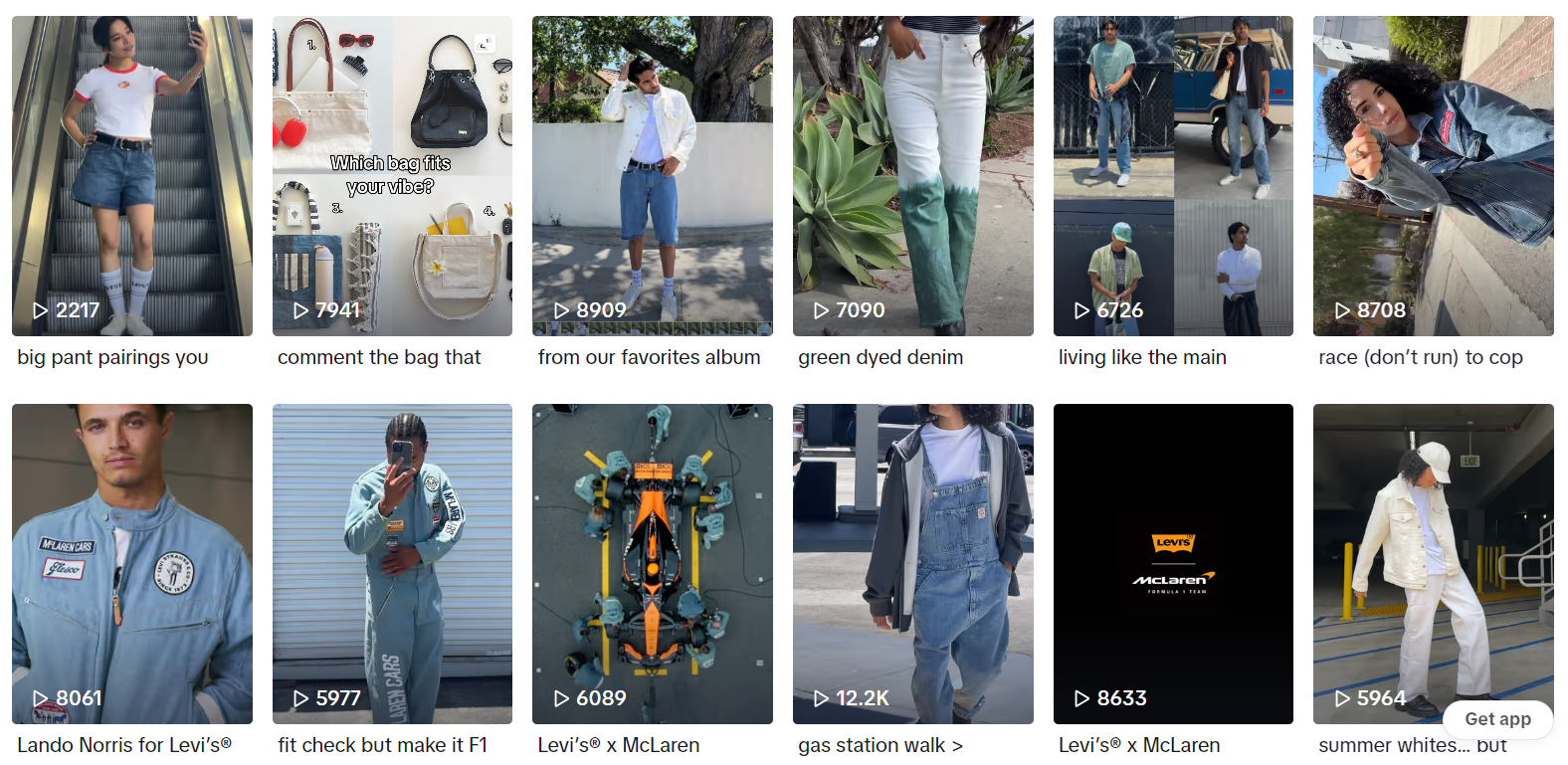
2. Share it across social media
The next step is sharing your content on social platforms to increase visibility. Here’s the secret to success: there’s no such thing as one-size-fits-all. You have to create content with the platform it’s going to be posted in mind.
Have you noticed how some of the most loved brands on social media adjust their content to fit the platform? Drunk Elephant, for example, posts photos, reels, customer reviews, and UGC on Instagram and focuses on short, engaging videos on TikTok to show how customers use their products.
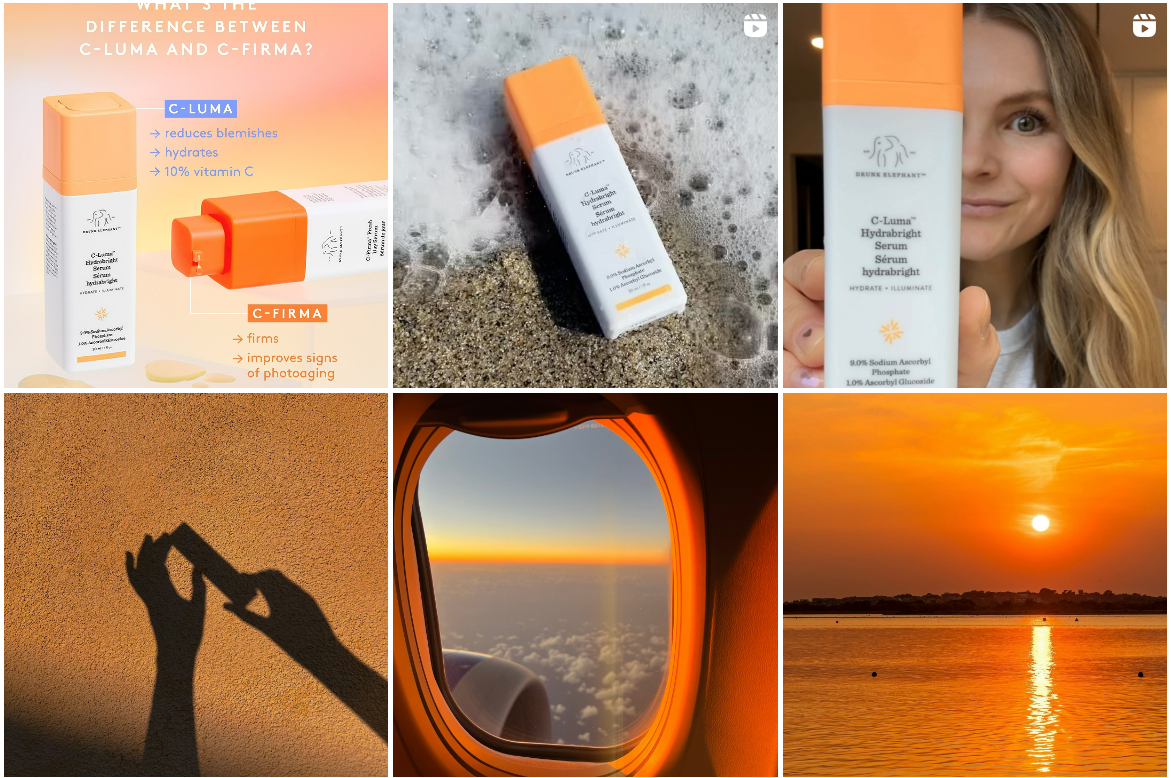
3. Engage with your potential customer base
Social media is all about meaningful interactions. No matter if you’re a brand or content creator, customers appreciate it when you answer their questions or acknowledge their opinions. Actively engaging with your audience builds relationships, fosters trust, and allows for personalized interactions that can lead to conversions.
If you’re monitoring social media just to make sure there aren’t any negative comments—you’re doing it wrong. Look at this example from Glossier and how they followed up with a follower who wanted to know when their Body Hero bar will be back in stock.
Keeping a pulse on customers’ wants and needs makes all the difference in social selling the inbound way.
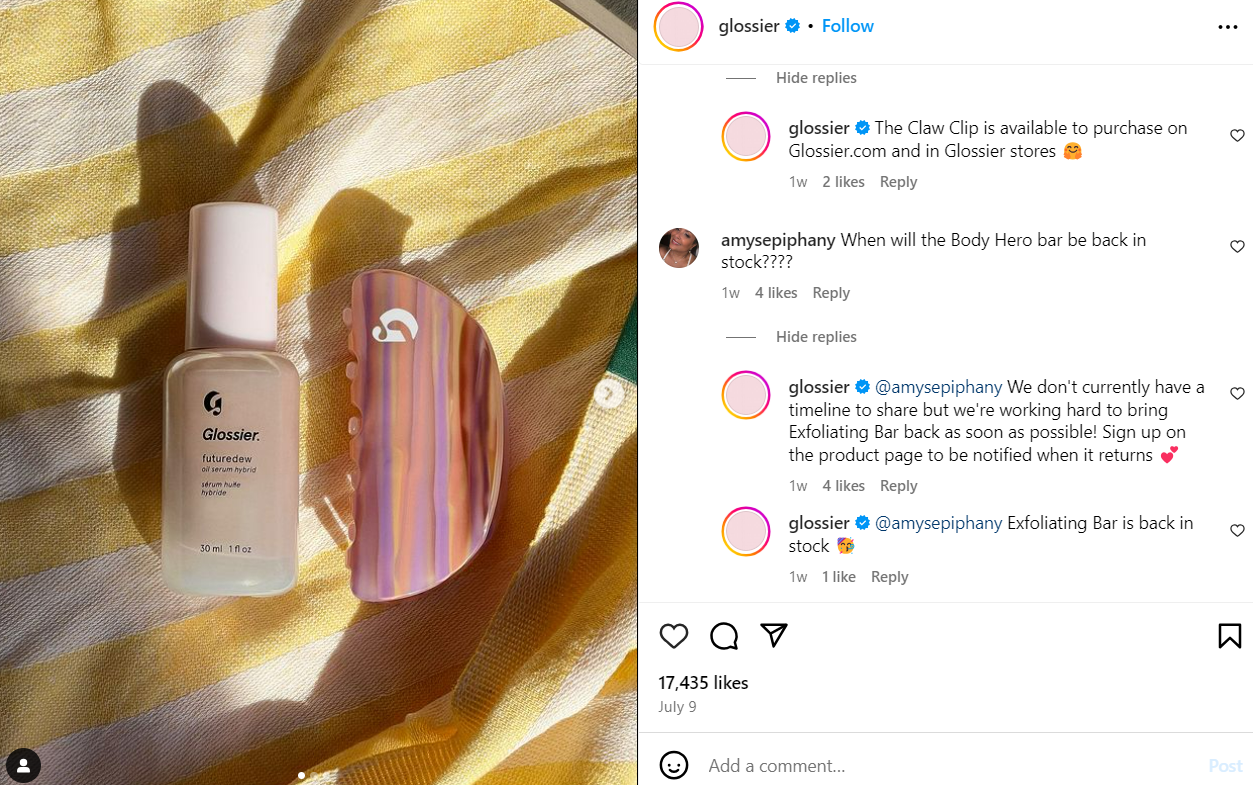
4. Become an industry leader
Establishing yourself as an industry leader through thought leadership content enhances credibility, attracts followers, and sets you apart from competitors. When you think about action cameras, the first thing that comes to your mind is probably GoPro, when you think of vacation rentals, AirBnb comes to mind, and the first association with vlogging is Casey Neistat.
So the question is: What does it take to become an industry leader or the first thing people think of when discussing a certain topic? It takes time, consistency, and dedication. Positioning as a leader is not an easy task. You must find your niche and constantly deliver value that your audience will recognize and reward.

5. Analyze your results, adapt, and improve
Monitoring and analyzing metrics such as engagement and conversion rates enables you to optimize your strategy, ensuring continuous growth and effectiveness in your inbound social selling efforts.
Tools such as Sprout Social, Hootsuite, and Buffer can help you analyze engagement rates, reach, impressions, and follower growth across various social media platforms. You can also manage interactions from a unified inbox, monitor keywords, and analyze your competitors' social media performance to optimize and improve your inbound social selling strategy.
Inbound social selling for digital products
All of the steps we shared above on how to start inbound social selling apply to content creators. You must create high-quality content, share it across social media, engage with your audience, position yourself as an industry leader, analyze results, and optimize.
However, there are a few more tips that can help you sell digital products using inbound social selling.
Create a personal brand
Creators invest so much time in building digital products they sometimes forget about the importance of personal branding. And the truth is that your personal brand plays a vital role in your digital product sales.
Dave Gerhardt built the Exit Five community to help leaders learn B2B marketing from each other by sharing experiences and knowledge. However, Dave built his personal brand and positioned himself as a thought leader way before he started building the Exit Five community.
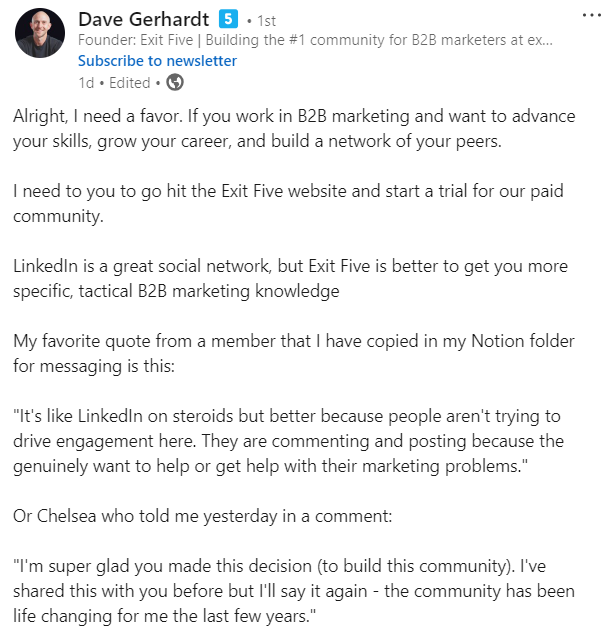
To build a personal brand, define your niche, establish a consistent and authentic voice, consistently deliver valuable content, and foster meaningful connections with your audience.
Offer free resources
Every creator who now sells digital products once created tons of free resources. Becoming a known and respected creator is a prerequisite for selling digital products. To achieve that, you have to first create value and share it with your audience for free.
Nicolas Cole is one of the most-read writers on the Internet. He’s the co-founder of Ship 30 for 30 and the Premium Ghostwriting Academy. But he’s also constantly providing value for his audience with free ebooks, guides, and templates.
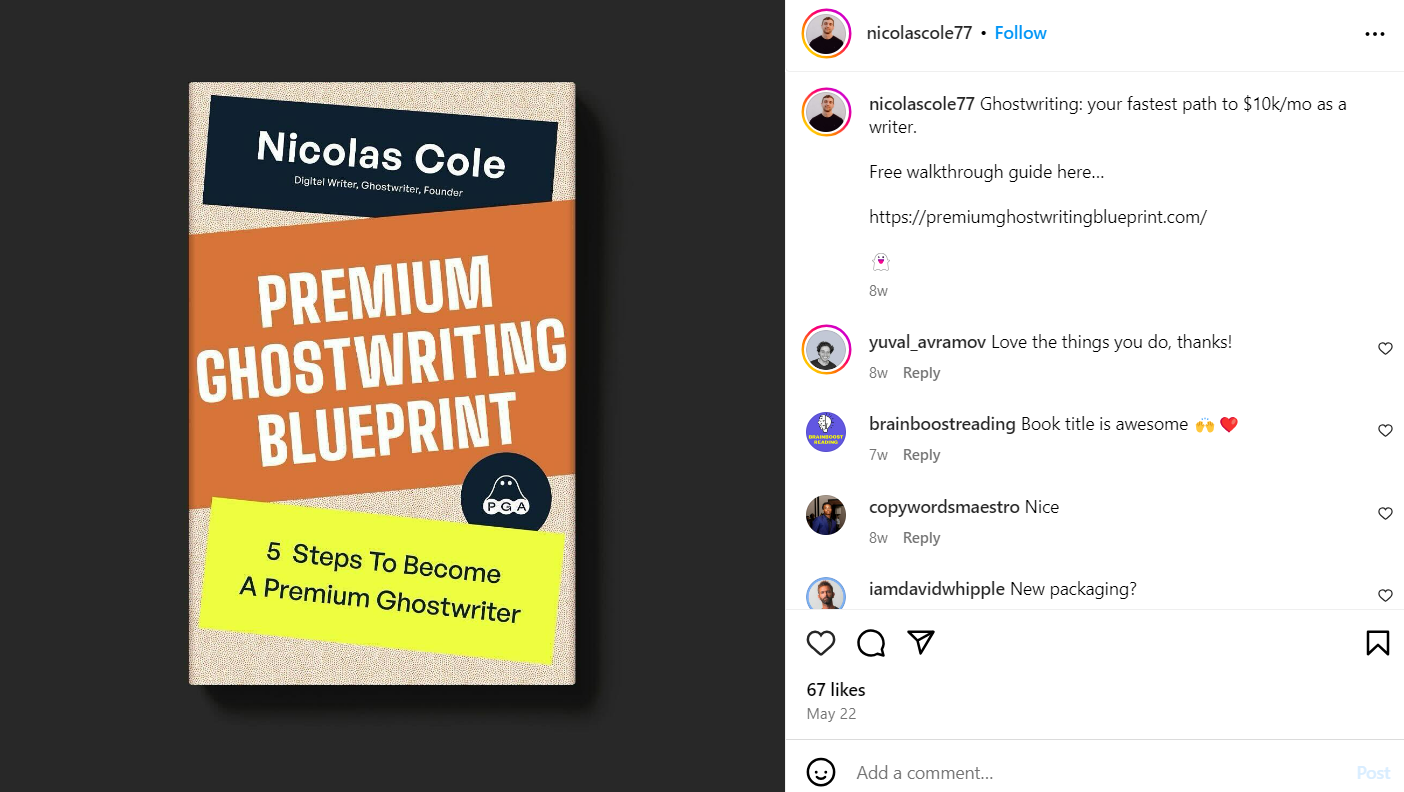
Focus on customer testimonials
Customer reviews and testimonials are crucial for digital product sales, and they can take your inbound social selling to the next level. As the digital equivalent of word-of-mouth marketing, customer testimonials instill confidence and encourage customers to make the purchase.
Aware of the power of customer testimonials, Kevin Shen, the founder of the Dream Studio Course, uses real-life stories, positive reviews, student results, and well-known creators as proof of the quality of his course.

Partner with other creators to promote your digital product
Sometimes, videos, visuals, and positive reviews don’t do justice to the digital product you’re selling. Customers need to see it in action. So whether you’re introducing your digital product or you’ve recently added a new feature, partnering with other creators who use your product can be the best way to capture more eyeballs.
Notion partners with digital creators to promote its productivity and note-taking web application. Whenever they introduce some updates to the tool, content creators such as Thomas Frank get to test them and share their thoughts with the audience.
By partnering with other creators, not only you get authentic user-generated content, but you also get in front of their network which gives you a boost in visibility and engagement.
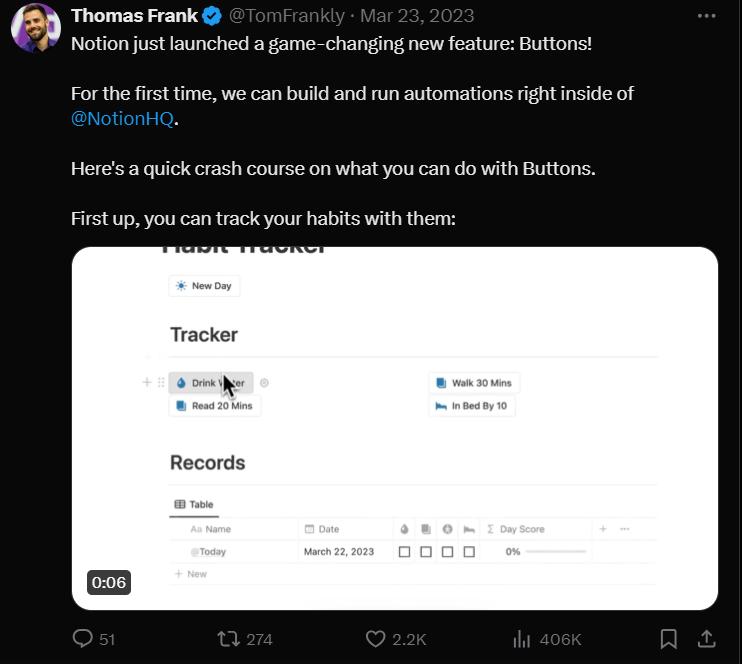
Start social selling the inbound way and watch your sales soar
Social media platforms are tapping into shoppers’ appetites for authentic content and meaningful connections with brands and content creators.
Social selling the inbound way adds a layer of convenience to the shopping experience, as it fits seamlessly into customers’ social media feeds and nudges them to buy something without unwanted advertisements.
If you want to connect with your customers, there is no better way to do that than Whop. With Whop, you can create your own whop, which is your hub on the internet.
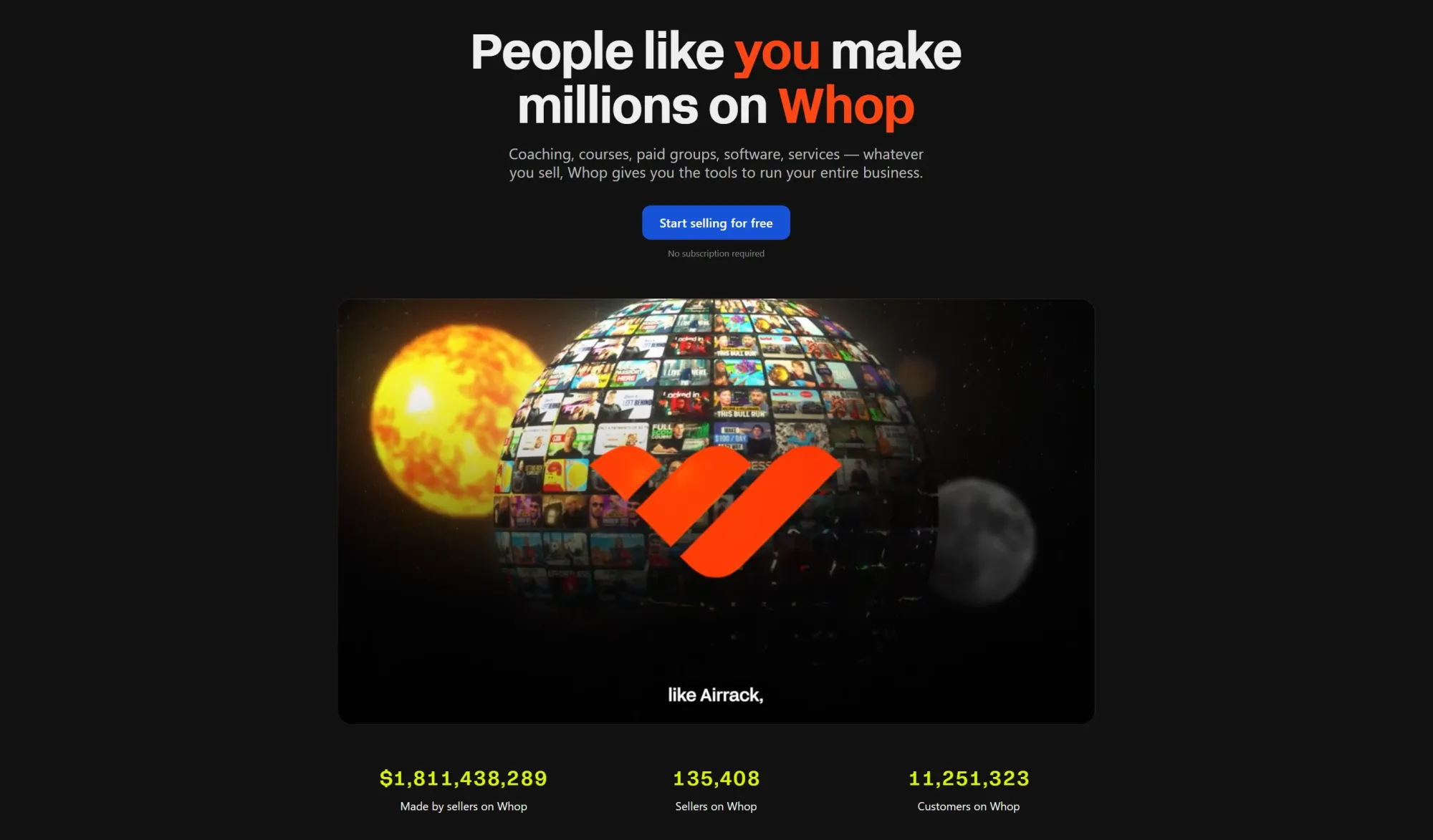
Your whop allows you to engage with your customers however you see fit. Simply create a chat in your whop and talk with your customers, or add a forum for a simple question-and-answer format.
Give back to your customers by hosting giveaways in your whop, and host live video sessions for some face-to-face communication. You can even sell all kinds of digital products like ebooks, courses, and software, right from your whop.
The best part? Your whop is designed by you. Add what you want, leave out what you don't, and charge for access to the aspects that you want to monetize.
Create a free chat for all members and a paid chat for a VIP group, paywall content within your whop - build your whop, your way. Use social media to reach your customers and direct them to your whop to socialize, share content, and buy your digital products.
With no platform membership fees and only a 2.7% + $0.30 cut of your sales, you can sell with Whop risk-free.

